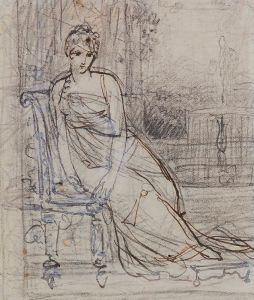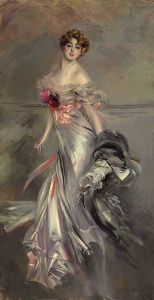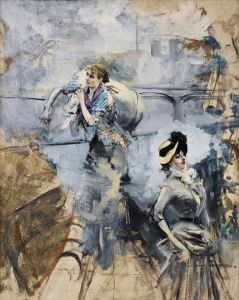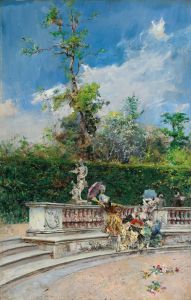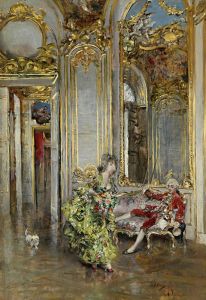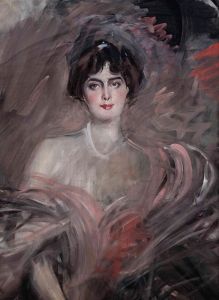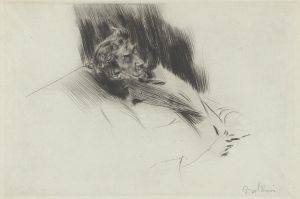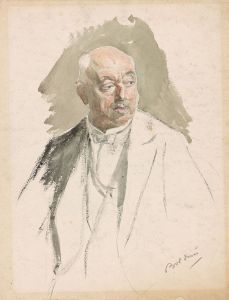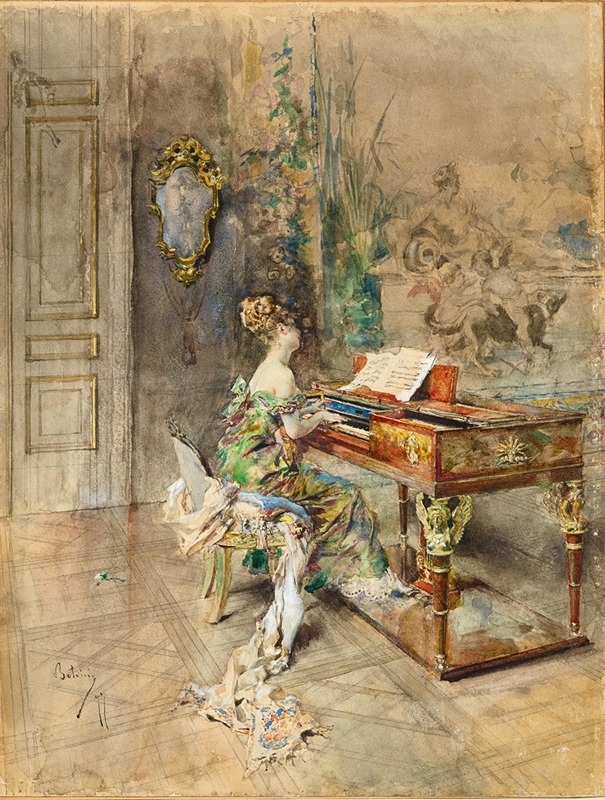
Pianista in abito settecentesco
A hand-painted replica of Giovanni Boldini’s masterpiece Pianista in abito settecentesco, meticulously crafted by professional artists to capture the true essence of the original. Each piece is created with museum-quality canvas and rare mineral pigments, carefully painted by experienced artists with delicate brushstrokes and rich, layered colors to perfectly recreate the texture of the original artwork. Unlike machine-printed reproductions, this hand-painted version brings the painting to life, infused with the artist’s emotions and skill in every stroke. Whether for personal collection or home decoration, it instantly elevates the artistic atmosphere of any space.
Giovanni Boldini, an Italian painter renowned for his dynamic and elegant portraiture, created "Pianista in abito settecentesco" (Pianist in 18th-century Dress) during his prolific career. Boldini was born in Ferrara, Italy, in 1842 and became one of the most prominent portrait artists of the late 19th and early 20th centuries. His work is characterized by a distinctive style that combines fluid brushwork with a keen sense of movement and vitality, capturing the essence of his subjects with remarkable flair.
"Pianista in abito settecentesco" exemplifies Boldini's ability to blend historical themes with contemporary techniques. The painting depicts a pianist dressed in 18th-century attire, a subject that reflects Boldini's interest in the elegance and sophistication of past eras. This choice of subject matter is consistent with the artist's broader oeuvre, which often features figures in opulent settings, dressed in luxurious garments that highlight their status and refinement.
Boldini's technique in this painting is notable for its loose, expressive brushstrokes, which create a sense of movement and spontaneity. This approach allows him to convey the energy and emotion of the pianist's performance, drawing the viewer into the scene. The use of light and shadow is masterful, with the illumination focused on the pianist, enhancing the drama and intensity of the moment. The background, rendered with less detail, serves to emphasize the central figure, ensuring that the viewer's attention remains on the pianist.
The choice of 18th-century dress for the pianist is significant, as it evokes a sense of nostalgia and romanticism. During Boldini's time, there was a fascination with the elegance and grandeur of the 18th century, and this painting taps into that cultural sentiment. The attire, with its intricate details and rich fabrics, is rendered with precision, showcasing Boldini's skill in capturing the textures and nuances of clothing.
Boldini's work, including "Pianista in abito settecentesco," was highly sought after by the elite of his time. His portraits were commissioned by aristocrats, socialites, and celebrities, who admired his ability to portray them with both realism and idealization. This painting, while not a commissioned portrait, still reflects Boldini's talent for capturing the character and spirit of his subjects.
Throughout his career, Boldini was associated with the Belle Époque, a period marked by cultural flourishing and artistic innovation in Europe. His work is often compared to that of contemporaries such as John Singer Sargent and James McNeill Whistler, who also excelled in portraiture. However, Boldini's unique style, characterized by its dynamism and elegance, sets him apart as a distinctive voice in the art world.
"Pianista in abito settecentesco" remains a testament to Boldini's artistic prowess and his ability to bridge the past and present through his work. The painting continues to be appreciated for its technical excellence and its evocative portrayal of a bygone era, capturing the imagination of viewers and art enthusiasts alike.





